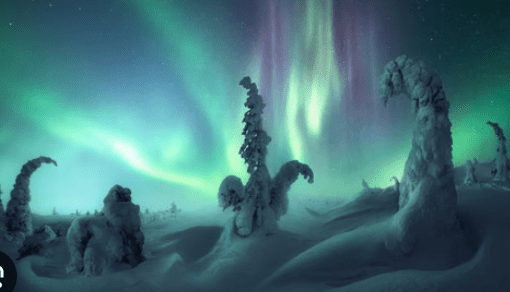Residents of Missouri and Illinois are witnessing a spectacular natural event this week — the northern lights, or aurora borealis, painting the night skies in vibrant hues of pink, green, and purple.

This rare occurrence is caused by geomagnetic storms, which happen when charged particles from the sun collide with Earth’s magnetic field. These interactions produce breathtaking displays of light but can also affect technology such as GPS systems, radio signals, and power grids.
On Tuesday night, stunning ribbons of color lit up the skies across the Midwest, with the most brilliant views appearing in rural regions away from the glow of cities like St. Louis and Kansas City. The phenomenon originates from coronal mass ejections (CMEs) — massive solar explosions that send plasma and magnetic energy racing toward Earth.
Experts say there’s another opportunity to catch this celestial show on Wednesday night, especially just after sunset. While visibility may vary, the experience is one you won’t want to miss.
📸 Tips to Photograph the Aurora Borealis in Missouri and Illinois
1. Choose the Right Location
- Escape city lights: Light pollution can wash out the colors, so head to a rural area or open field with a clear view of the northern horizon.
- Add a landmark: Include a local object like a barn, tree, or building to make your photos uniquely tied to your community.
2. Get the Right Setup
You don’t need expensive gear to capture the moment — just a few smart techniques.
- Using a smartphone:
- Turn off your flash and enable night mode.
- Keep your phone steady on a tripod or solid surface.
- Use a timer to prevent shaking.
- Clean your lens before shooting.
- Using a camera:
- Opt for a wide-angle lens to include more of the sky.
- Set your camera to manual mode for full control.
3. Adjust Your Camera Settings
If you’re using a DSLR or mirrorless camera, balance the following:
- Shutter speed: Long exposure (try 10–20 seconds).
- Aperture: Wide open (f/2.8 or lower if possible).
- ISO: Keep it low to reduce noise, around 800–1600.
- Format: Shoot in RAW to preserve image data for editing.
4. Use Helpful Apps
Download apps such as My Aurora Forecast & Alerts to track aurora activity and get notifications when conditions are optimal for viewing.
🌌 Enjoy the Experience
Remember, each aurora display is one-of-a-kind. If your photos don’t turn out perfectly, take a moment to simply enjoy the beauty of nature. Standing beneath glowing skies with friends or family can be just as magical as capturing the perfect shot.
Have an amazing photo from this week’s northern lights? Share it with social@stlpr.org for a chance to be featured.
CLICK HERE TO GET THE FLOWLESSKNOWLEDGE
Make Smart Tech & Finance Choices
Stay informed about global events and manage your finances smarter using free tools from our trusted partners: